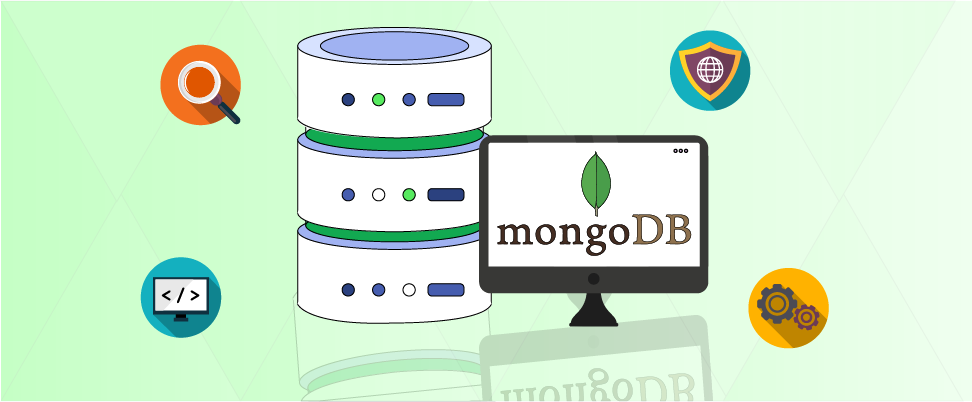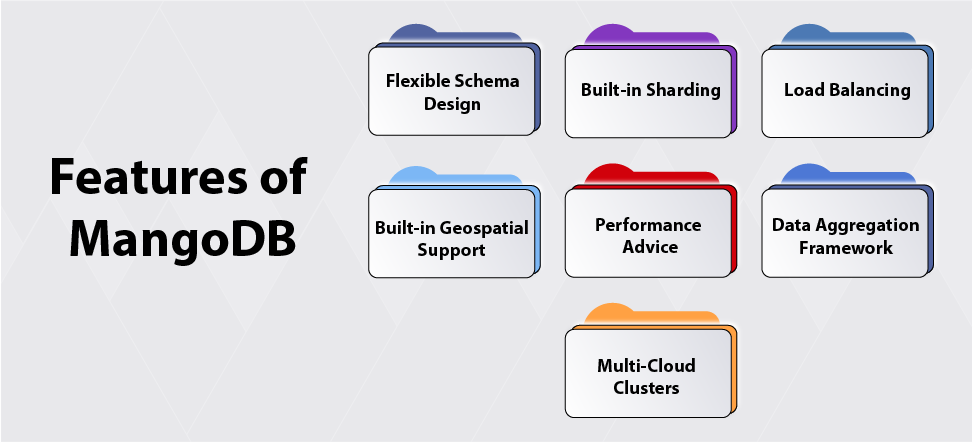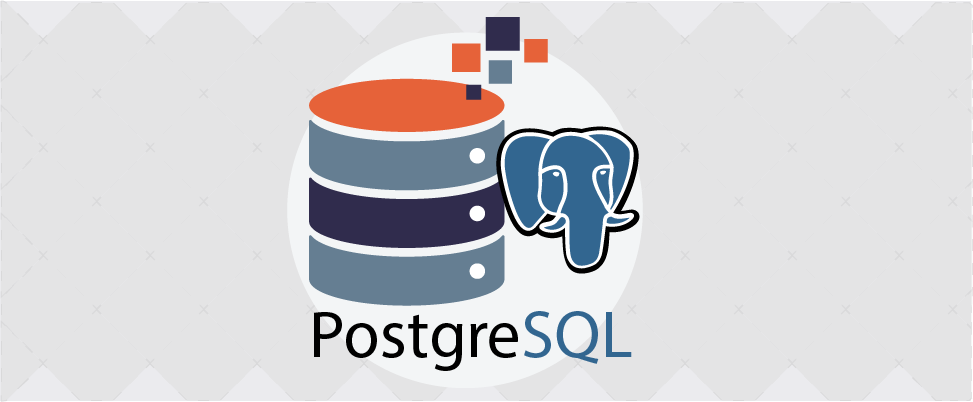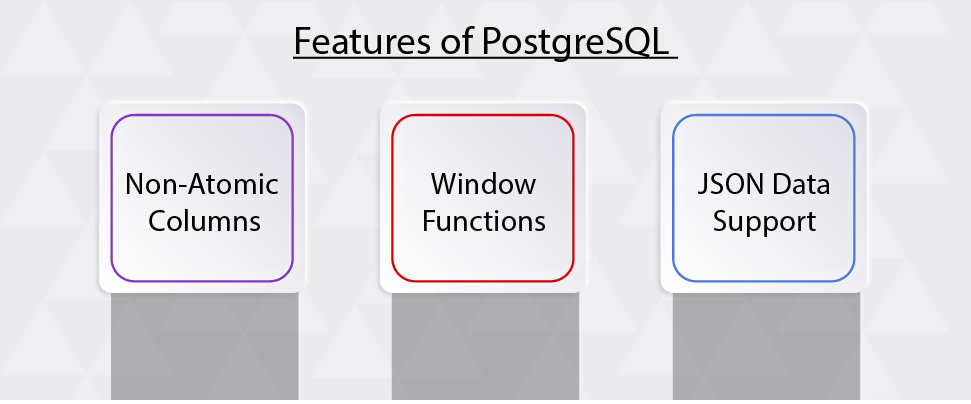Table of Contents
ToggleIntroduction
MongoDB and PostgreSQL are two most popular databases used for different purposes. MongoDB is a non-relational, aka, NoSQL, database. It allows users to store almost all types of data, including JSON documents, for fast retrieval, replication, and analysis. Whereas PostgreSQL is an object-relational database management system that lets you store data as tables with rows and columns, this article will walk you through the differences between MongoDB and PostgreSQL. So, in the end, you can choose between these two databases.
What is MongoDB?

Introduced in 2009, MongoDB is popular for JSON-like documents with optional schemas. Its compelling advanced cloud capabilities provide unparalleled data distribution across major platforms like Azure, AWS, and Google Cloud, making its mark in the modern database market. One of the most notable features of MongoDB is the Atlas, which lets users create a cloud database within minutes. As a user scales and incorporates new features, Atlas provides optimization tools and resources.
Features of MangoDB

- Flexible Schema Design: MongoDB does not need a fixed schema like traditional relational databases. It rather offers flexibility and promotes a dynamic scheme. Therefore, users don’t need to modify the entire design; some changes in the document structure are enough. This flexible nature of MongoDB can be extremely beneficial during the development phase of applications, as multiple changes don’t need to be made to the database.
- Built-in Sharding: When the data grows large, MongoDB uses this built-in sharding feature to share the data across multiple servers. This ensures faster read/write operations and effectively distributes data.
- Load Balancing: With its efficient load management technique, MongoDB effectively manages the traffic. It evenly distributes client requests across servers; thus, not a single server faces delays and slowdowns. As a result, there will be consistent performance, enhanced data availability, and better resource utilization.
- Built-in Geospatial Support: If you’re building food or clothing apps, then including location data is a must. This feature makes it ideal for location-based services and applications. Apart from this, MongoDB provides the tools to store, process, and query geospatial data effectively.
- Performance Advice: MongoDB provides suggestions based on the application’s needs while designing the schema. This proactive suggestion helps to maintain the speed and efficiency of applications.
- Data Aggregation Framework: With this feature, MongoDB can seamlessly transform complex data and computations. This powerful aggravation framework enables us to process data and derive valuable insights. It is extremely useful for carrying out data processing and analytics without relying on third-party processing tools.
- Multi-Cloud Clusters: Using MongoDB, users can leverage the strengths of cloud providers, i.e., Azure, AWS, Google Cloud, and others. This will save on costs by selecting the best product from these cloud providers and improve the application’s resilience.
What is PostgreSQL?

PostgreSQL is an open-source database with 27 years of mature community development. Even though NoSQL databases have taken the database market by storm, relational databases like PostgreSQL continue to be relevant due to their robust querying abilities. Relational databases are remarkable for complex queries and data-based reporting where the data structure doesn’t change frequently. Moreover, it doesn’t have license costs, making it a perfect alternative to SQL Server and Oracle.
Features of PostgreSQL

- Non-Atomic Columns: PostgreSQL provides flexibility, allowing users to insert sub-values inside the columns. This makes it easier to effortlessly access and query complex data structures.
- Window Functions: This is the best feature of PostgreSQL that allows the execution of functions over rows while keeping the original row count. This feature is beneficial for analytical and complex computational tasks in various data sets where precision and accuracy are crucial.
- JSON Data Support: PostgreSQL can integrate well and store the JSON data, which can effectively handle the NoSQL workloads. This, in turn, helps deal with unstructured data and lets designers design databases to meet various needs.
MongoDB vs. PostgreSQL: Use Cases
PostgreSQL: PostgreSQL is the core foundation for modern web applications. The following examples showcase the prowess of PostgreSQL.
- Scientific Data Processing: Scientific tasks and research work require a detailed approach and diligent supervision. For this task, PostgreSQL is an ideal solution, as it has a powerful SQL engine and unmatched analytical prowess. Plus, the accurate processing of data terabytes makes research projects agile and insightful.
- Federated Hub Database: PostgreSQL can easily interlink with NoSQL databases and other various data stores. Because it supports JSON and foreign data wrapper adeptness. PostgreSQL acts as the central database hub that distributes databases across the network and facilitates communication and interactions.
- Manufacturing Industry: PostgreSQL provides reliable storage for a couple of leading manufacturing industries, from customer-centric to supply chain. With this reliable and robust database support, the industry can embrace innovation and growth.
MongoDB: Today, MongoDB is not only a database, but it also serves as a resource center for diverse applications for many organizations.
- Content Management: MongoDB lets users store any content within a single database. Using this, you don’t have to invest a hefty amount in hardware. It offers all the features for users to make their content feature-rich and supports collaborative teams.
- Mainframe offloading: MongoDB allows you to replicate commonly accessed mainframe data to an operation data layer (ODL) and easily move workloads off the mainframe.
- Personalization: MongoDB has features like targeted offers, customized home pages, and social media network sign-on. With these many features, personalizing millions of customers in real time is straightforward.
- Payments: MongoDB has great agility, which allows developers to build new payments for a product as well as modernize the payment for a mature enterprise. Without getting involved in the complex parts like data collection. MongoDB lets you build new products and services with a safe and customized solution.
Must read: Difference between SQL vs. NoSQL Database PostgreSQL vs. MongoDB: Key Differences
| Factors | MongoDB | PostgreSQL |
|---|---|---|
| Architecture Model/Document Model | Document Model | Architecture Model |
| Agility | It is more agile with BSON’s efficiency and document model. | Due to its non-relational structure, it lacks agility like MongoDB but promotes structured collaboration. |
| Performance | It has the upper hand in data insertion speeds and horizontal scalability. | Whereas PostgreSQL stands tall with ACID compliance and plethora of performance optimizations. |
| Replication | It has the robustness of replica sets for redundancy. | Whereas it promotes diverse replication methods to cater to various use cases. |
| Syntax and Programming Language Supported | It uses JSON-like document queries written in documents and programming languages supported by MongoDB are Python, Java, Scala, JavaScript, C, C++, C#, and R. | It uses SQL for querying, a standard language for database operations, and supports Procedural Language PL/pgSQL, PL/Python, PL/Perl, PL/Tcl, PL/Java, PL/PHP, PL/Ruby, PL/pgSQL, PL/Python, PL/Perl, PL/Tcl, PL/Java, PL/PHP, and PL/Ruby. |
| ACID vs BASE | MongoDB is Basically Available, Soft State, and Eventually Consistent (BASE), It is not transaction safe. | PostgreSQL is Atomicity, Consistency, Isolation, and Durability (ACID), It guarantees reliable database transactions. |
| Foreign Key Support | MongoDB does not support foreign keys as it doesn’t have a schema design but uses DBRef to create references between collections and resemble the connection in data. | It strictly follows the SQL standards this involves robust support for foreign keys to restrict mismatched data. |
| Database Structure | It is a non-relational database that stores data in dynamic JSON-like documents and doesn’t need a pre-defined schema to store data. | It is an object-relational database that stores data in pre-defined tables with rows and columns. |
| Index Technique | It has a flexible approach to indexing different data structures, including nested subdocuments and arrays. | It provides a diverse array of advanced indexing techniques. |
| Normalization | It supports normalized using references, but this approach may lead to data duplication and high memory consumption. | It supports schema design and displays relationships between data using one-to-one, many-to-one, and one-to-many. Also, the structured approach provides accuracy and consistency. |
| Sharding/Partitioning | It encourages scalability through sharding. | It focuses more on structured partitioning techniques such as range and list partitioning. |
| Query Processing | It offers a more flexible, document-oriented approach, catering to dynamic data structures and diverse querying techniques. | It has structured, relational data management with an emphasis on table relationships therefore, PostgreSQL is a champion. |
| Extensibility | It can extend in multiple ways and offers dynamic loading and catalog-driven operations. | It has many extensible features with User-Defined Functions (UDF). |

Don't miss out on your chance to work with the best
apply for top global job opportunities today!
When Should I Choose MongoDB vs PostgreSQL?
Deciding on the right tool for yourself, especially a database, can be challenging. The right choice between MongoDB and PostgreSQL depends on the specific needs and how you prioritize flexibility, relational capabilities, scalability, or ease of use.
MongoDB’s schema-less design doesn’t need to restructure the entire database design. This feature is an added boon for developers who are working with rapidly evolving applications. Also, it uses BSON (Binary JSON) for storing data; developers who are already familiar with JSON and JavaScript will find it easy. PostgreSQL, on the other hand, has a structured query language interface; those who have prior experience working with traditional relational databases won’t have any trouble using PostgreSQL.
But that being said, PostgreSQL schema definitions require proper planning and require frequent changes. Thus, it might take some more time to understand the intricacies of database design, especially for absolute beginners. Hence, both of these databases are user-friendly, but it also depends on experience and your requirements.
MongoDB promotes horizontal scalability, making it a preferred choice for big data applications and large enterprise solutions. When the database grows, it uses sharding to manage and distribute data. PostgreSQL on the other hand, relies on vertical scaling, so whenever the database grows, developers need to increase the existing server’s resources like CPU, memory, and storage. With the feature Foreign Data Wrappers (FDWs), PostgreSQL can connect and integrate with other databases to distribute the workload. However, it’s not as inherently distributed as MongoDB.
Therefore, In the extensive world of databases, MongoDB and PostgreSQL stand out as the major players that stand neck-to-neck with each other. MongoDB is popular for its schema-less design and horizontal scalability, which makes it ideal for big data applications. Similarly, PostgreSQL is best known for its relational capabilities, data integrity, and robustness. It is the perfect choice for projects that need structured data management. If you’re a Database expert looking for lucrative job opportunities, then sign up with Olibr.
Take control of your career and land your dream job
sign up with us now and start applying for the best opportunities!

FAQs
The speed varies based on the function, indexing, hardware, data model, and query design. But in general, MongoDB can write operations quickly, and PostgreSQL can be faster for complex queries, especially those that require joins.
MongoDB excels with unstructured data and scales horizontally, while PostgreSQL is ideal for structured data, ensuring data integrity and complex querying. The best database for large datasets depends on the data type and required operations.
Both MongoDB and PostgreSQL are best in their respective use cases, but one cannot be universally better than the other. The best choice depends on the specific use case and requirements. MongoDB is best for flexibility with its JSON-like document format, while PostgreSQL is a relational database ideal for high data integrity and SQL querying.
Both databases can scale up when the application grows, while PostgreSQL scales vertically, but with some extension, it can scale horizontally too. MongoDB scales horizontally and offers an easier path.

